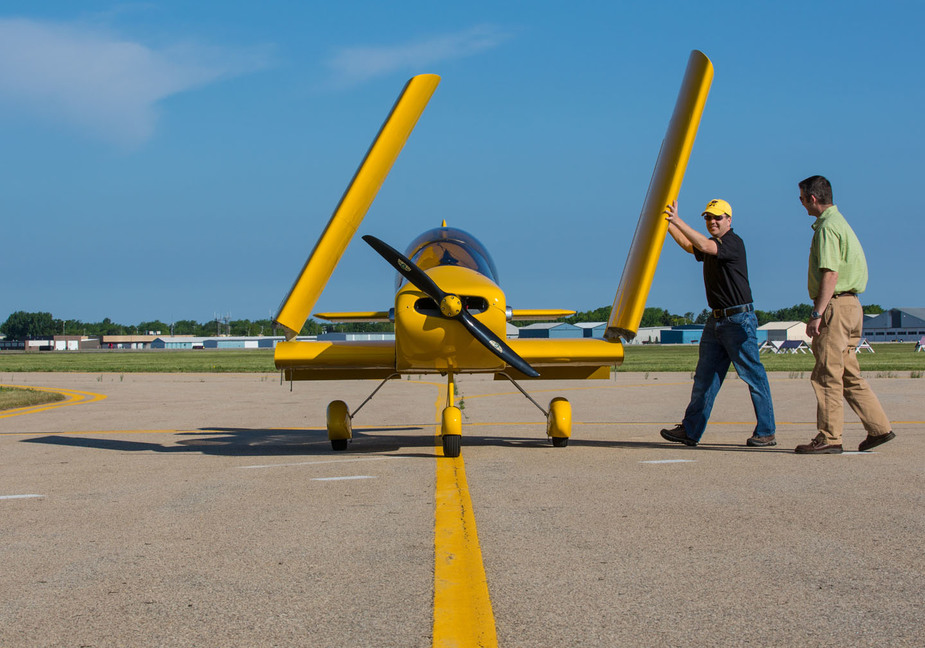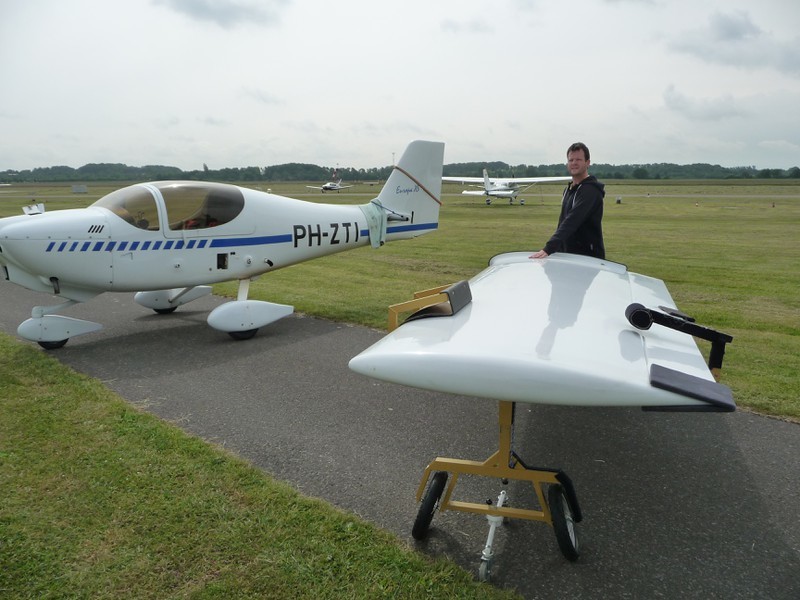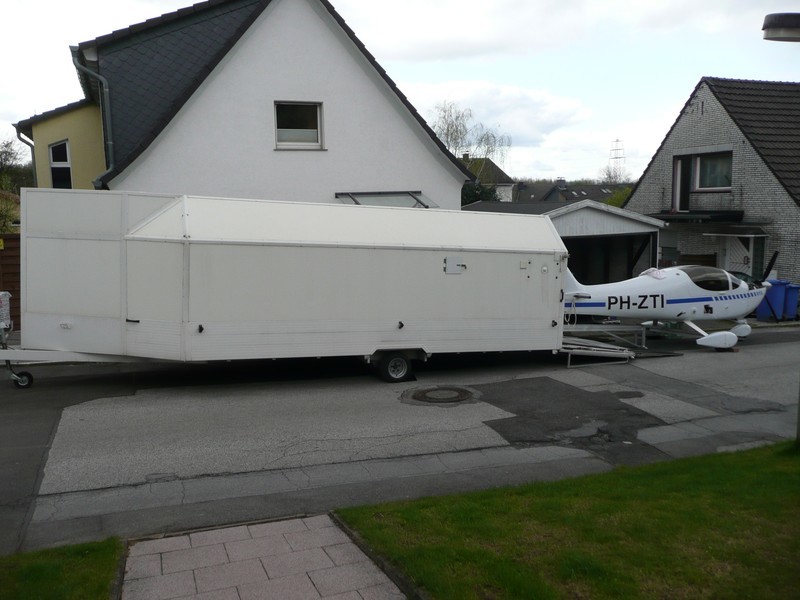I think during every flight, I’d be looking at those wing joints and wondering if it is going to stay put. :-)
With the Onex it’s a matter of folding the wings up. It takes a few seconds. It can then be transported with just about any trailer.

The Europa can be rigged single hand as well in no time. You only just need a rigging aid, which I have 

Ah and it is almost twice as fast as an Eurofox 
Or a Eurofox. Apparently folding the wings and putting it in the trailer (for the tail wheel version) can be done by 1 person.

End of all recovery worries and safes you hangarage as well and enables you to do all mainenance at home – or bring it to any shop in any weather also outside airport opening hours, and avoid hangar rash and refuel at the car station and……
Just buy a Europa 
Xtophe wrote:
worry about paperwork in a parallel universe
I think it has a big “experimental” on the backseat 
Just have a friend fly-in a new prop while having pancakes, fit it, fly away:
and worry about paperwork in a parallel universe …
We put it back in the plane later. (The aux tank only holds 60L, that’s 3 jerry cans worth, so it’s not hard to keep it back for later flights).
alioth wrote:
We de-fuel ours all the time
What do you do with the removed fuel? Here (US, California), it has to be disposed of as hazmat. A few months ago the fuel strainer valve on the 210 I fly failed in flight (likely cause was some condensed water freezing, cracking the seal and then thawing – the airplane was parked outside in minus 16C overnight). The fuel that was removed from the tank had to be disposed of.
For a typical small SEP, not really. We de-fuel ours all the time (to keep the weight down when towing gliders, it’s nice to have the aux tank empty). Jerry cans and a pump to get the siphon going, and a grounding line are generally enough. In the case of recovering an Auster (or a Cub, or a Taylorcraft, or anything similar) with a failed engine out of a field, the fuel tanks are all in the fuselage anyway so you probably don’t even need to defuel it.
However, depressingly often, aircraft need to be removed from fields that are too small to take off in again due to what can be described as “an excessive quantity of air in the fuel tanks”. In that case, defuelling isn’t really an issue!